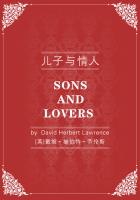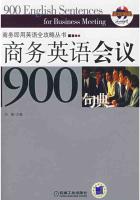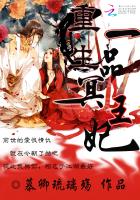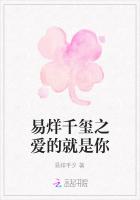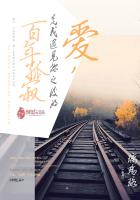China is a multi-national country with a long history and a vast territory. Its geographical environment and human factors are highly complex. Due to historical reasons, regional economic and cultural development is very uneven and the customs of various regions also vary, which is why a number of smaller cultural areas with distinct cultural characteristics were formed in earlier times including the Central Plains, Qi-Lu, Jing-Chu, Guan-Long, Wu Yue, Ba-Shu, Lingnan, the southern Fujian culture and the emerging cultural areas in Beijing and Shanghai. Indeed, Chinese culture has been integrated among these regional cultures.
Because Wushu is a cultural type, it is greatly affected by regional cultures. While the martial art belongs to the pure folk cultural type—its vitality lies in the hands of the upper-class. Therefore, its regional features are most profound. The major Wushu schools come from regional cultures.
Huang Zongxi, one of the foremost Chinese scholars and reformers in the early Qing dynasty (1644–1911) put forward the idea of “Neijia (internal)” and “Waijia (external)” types. He believed the type to strike the first blow and initially attack was the external type, such as Shaolinquan while the type which gains mastery by striking only after the enemy has struck was the internal type, such as the Wudangquan. Successors consider the tougher and stronger type to be the external and the gentler type to be the internal.
After a long process, Wushu has formed seven regional boxing families based on several different regional cultures. Each major boxing family focuses on one or boxing families are:
A: Shaolin: based on central Chinese civilization, centered on Songshan Shaolin Temple and widely distributed in the provinces of northern China.
B: Wudang: based on Jing-Chu culture, centered on Wudang Mountain in Hubei province and distributed in Hubei, Henan, Jiangsu, Sichuan and Shanghai.
C: Emei: based on Ba-shu culture, centered on Emei Mountain of Sichuan province and distributed in the provinces of southern China.
D: Nanquan: based on southern Fujian and Lingnan cultures, centered on Quanzhou and the Pearl River Delta, and distributed in the provinces of southern China.
E: Xingyiquan (intentional boxing): based on Shanxi, YanZhao and Central Plains cultures, centered on Shanxi, Hebei and Henan, and distributed throughout the entire country.
F: Taijiquan: based on Central Plains and Beijing culture, centered on Henan and Beijing, and distributed throughout the entire country.
G: Baguaquan: based on Beijing culture, centered on Beijing and distributed throughout the entire country.
Shaolin, Wudang and Emei boxing families were formed earlier based on famous mountains and famous temples, and Xingyi, Taiji and Bagua were formed later, and first became popular in northern China. Martial arts practitioners like to call Wudang, Xingyi, Taiji and Bagua the “four big boxing schools of internal types.”
Shaolinquan Family
In common parlance, all Kungfu from around the world comes from Shaolin. The Shaolin Temple on Mount Songshan at Dengfeng in Henan Province is the cradle of Shaolin Kungfu. Located in Dengfeng county of Henan province, Songshan is known as the central mountain of the Five Sacred Mountains. Located at the foot of Songshan Mountain, the Shaolin Temple is very magnificent.
According to historical records, the Shaolin Temple was built during the Northern Wei Dynasty under the reign of Emperor Taihe (AD 495). The first Indian monk to live in the Shaolin Temple was Gunabhadra (394–468). Bodhidharma (?–536), once visited the Shaolin Temple, but didn’t live there for a long time. One story says he gazed at a wall in the Shaolin Monastery for nine years. Another legend said he wrote Yi Jin Jing . The proposition, though very influential, was eventually proved to be false, for there was a monk named BodhHiharma, but it was later found he knew absolutely nothing about the Chinese Quan.
In fact, Shaolinquan was the manifestation of the wisdom of the monks of the temple, secular Wushu masters and army generals and soldiers.
Bhadra
Bhadra was from Sindhu (India). During the Emperor of Xiaowen of the Northern Wei Dynasty, he came to China to spread Buddhism, and was respected. After the Northern Wei Dynasty relocated its capital to Luoyang, the emperor built a temple for him in Luoyang. He was fond of quietness, so the emperor built a temple for him, today’s Shaolin Temple. He was the founder and the first abbot of Shaolin Temple. He translated such scriptures as Huayan, Nirvanasutra, Vimalakirti Sutra, and Ten Stages Sutra at the Scripture Translation Table. When he was old, he moved outside the Shaolin Temple until he passed away.
Bodhidharma
Bodhidharma was from south Sindhu. As a Brahman, he claimed to be 28 th Zen Buddhism patriarch, the ear liest Chinese patriarch of Zen Buddhism, so the Chinese Zen Buddhism is also known as Dharma Zen. He sailed to Guangzhou during the period of Emperor Wu of Liang of the Southern Dynasty. The emperor believed in Buddhism. Dhar ma went to Jianye, the capital of the Southern Dynasty, to meet the emperor. He talked with the emperor, but reached no agreement, so he sailed north to Luoyang, the capital of the Nor thern Wei. He reached Shaolin Temple, and was said to face the wall for nine years, and handed down his mantle and alms bowl to Hui Ke. In the third year (536) of Tianping period of the Eastern Wei Dynasty, he died in Luohe bank, and was bur ied on Mount Xiong’ er.

